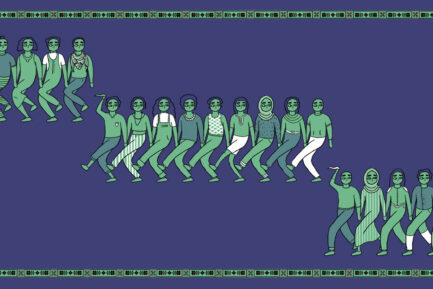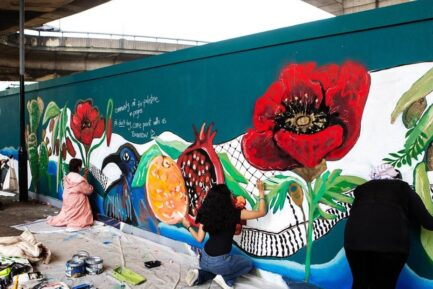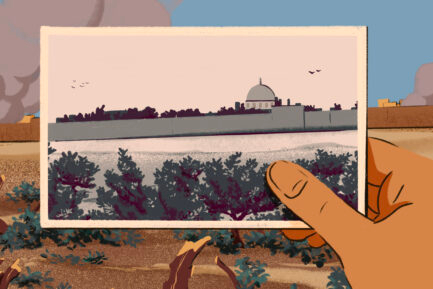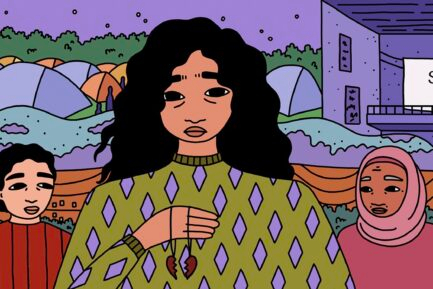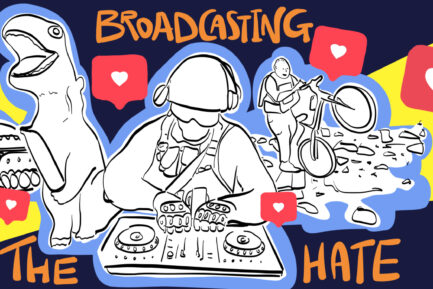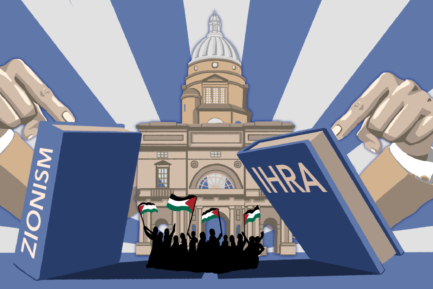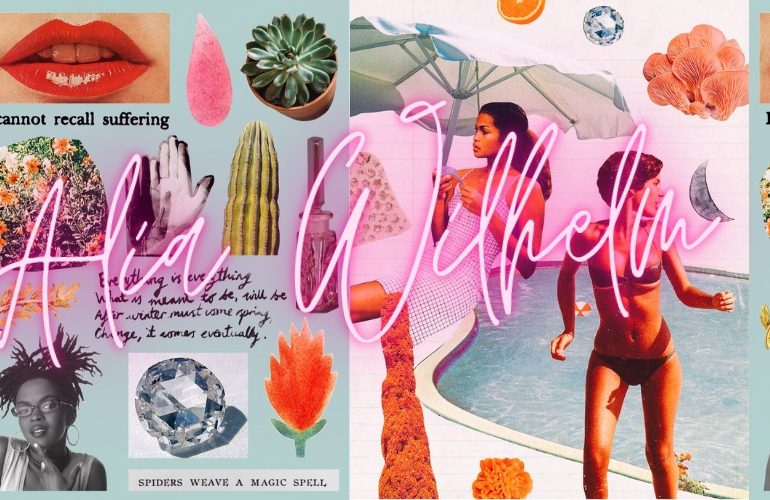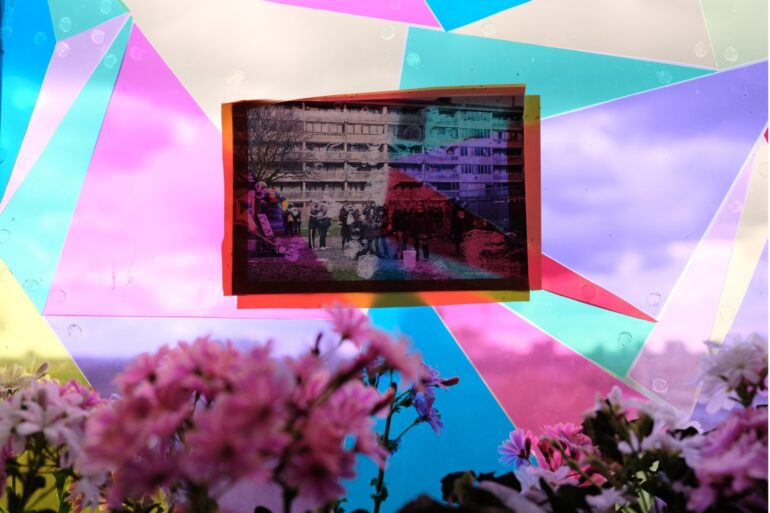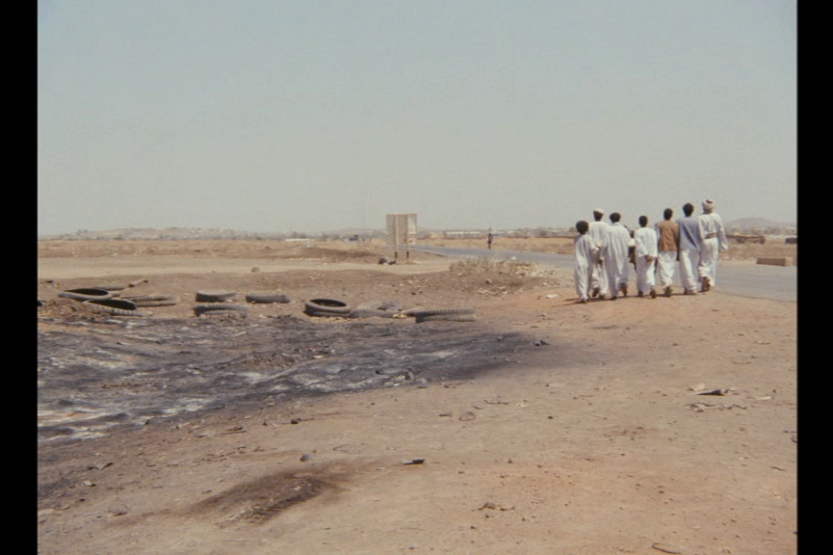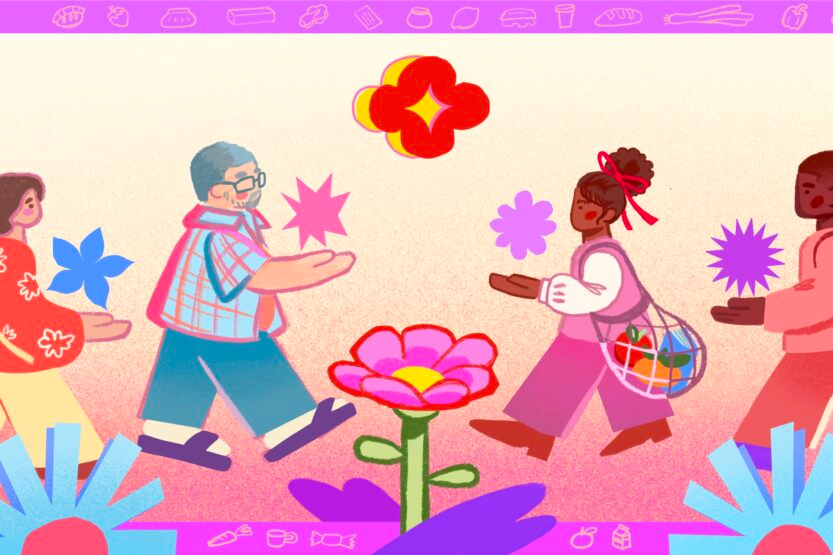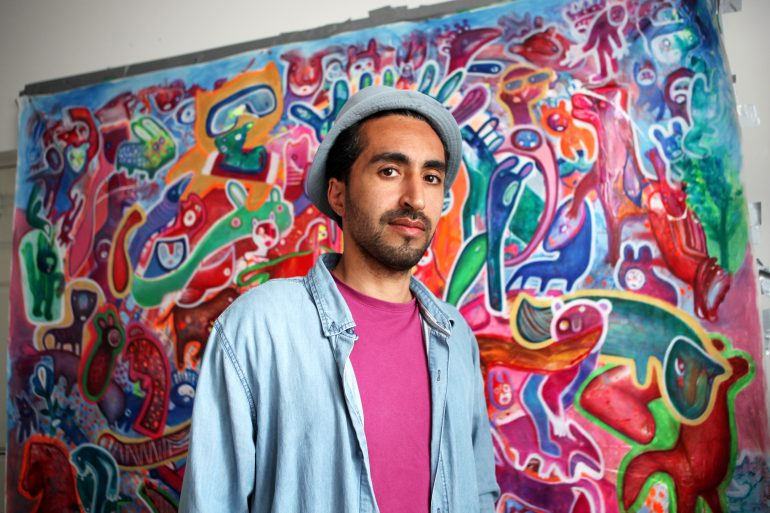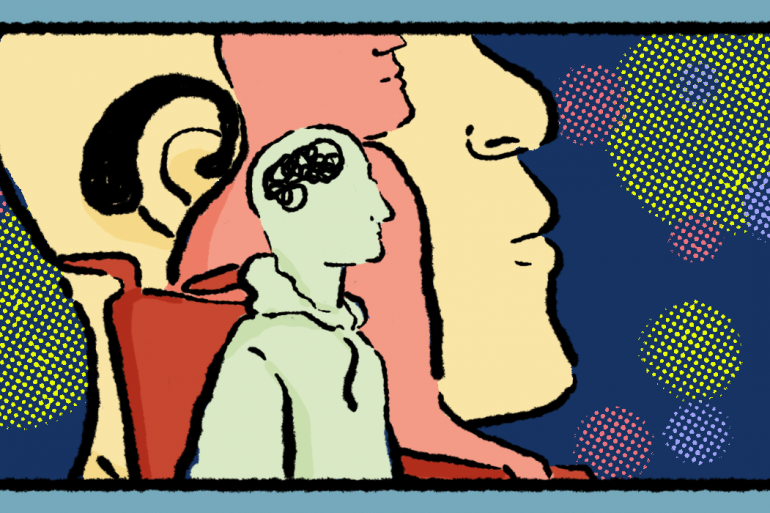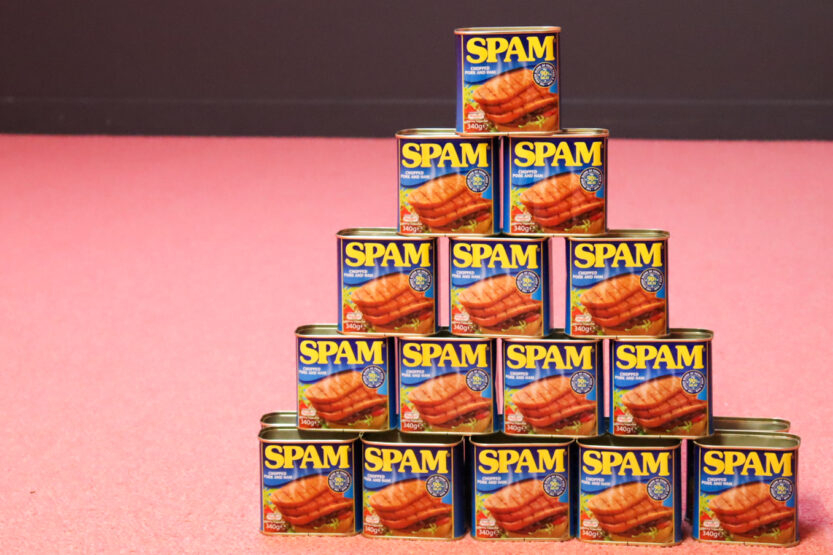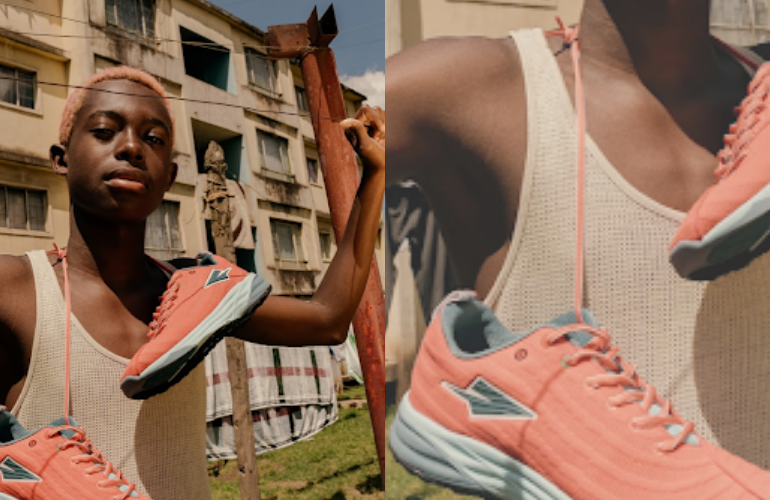I first met artist Wafa Hourani in 2020 to talk about his Qalandia series: a beautiful interrogation of the social, political, and economic realities of Palestinian life using photography and sculpture. His work plays with illusion to transcend timelines and borders – and just as Wafa’s willingness to embrace such intricacies remains unchanged, I remain as struck now as I was then by the challenge of confining him to any word count.
Being in Wafa’s orbit is to move through subjects and theory with abandon, following him through perspectives and memory, as he switches lights on in your brain. He is a writer and a poet; a sculptor; painter; filmmaker; photographer; draughtsman and model maker. His breadth of knowledge confounds me every time we speak, and I must reluctantly pause him for explanations of the references and phenomena that colour our conversations. Like the work he creates, Wafa’s outlook makes space for complexity – expanding for layers of plurality, however messy.
This time, he called me from his home in Ramallah, in Palestine’s occupied West Bank. The context surrounding our conversation has changed dramatically in the years between, but Wafa feels the same: warm, funny, and full of hope.
Amidst my own rage and sadness, I was confronted by his tenderness, struggling to understand how his buoyancy had remained intact, resisting the leaden weight of the genocide being waged around him.
Learning the power of perspective
“On the 4th April this year, it was 30 years since I was shot,” he tells me. “I still have the shoes.”

It was that day in 1994 when Wafa was shot in the foot by an Israeli soldier as he walked home from school one afternoon. “With all my heart I’m with the children of Gaza. I can feel them,” he says, “not just with my heart, I can feel them with my foot!”
He has a tape of it happening; a Reuters journalist captured it on film. The recording could be from the present day, so familiar now are the scenes of panicked adults carrying wounded children into hospitals.
Wafa finds it painful to watch but he doesn’t want revenge: “You need to forgive, you need to love, in order to continue this life. I don’t have to forget I am Palestinian to believe in peace. I will believe in peace forever. It is not the right time, it is complicated now, but it will not change my belief in life. I will fight for peace, I don’t want war anymore. And I cannot normalise that Israelis will not exist. We are in an exceptionally dark time of Israeli politics, but does that mean you can judge every Israeli citizen? No! They are human, they have children too. For me, it is much harder to hold peace. It is easier to hate.”
That injury, and the year of recovery that followed, are what Wafa credits with making him an artist. Poetry, literature, music and images became his tools for survival and portals out of the bed he couldn’t physically leave.
“I faced death for the first time at the age of 15 – but I faced life!” he tells me. “It shocked me like an earthquake and threw everything into a new perspective.” This kind of optical shift feels present in so much of Wafa’s art, in the way he plays with scale and time, reimagining histories and futures.
The residents of Qalandia refugee camp were the first viewers to see Qalandia 2087, a meticulous, sculptural installation depicting the camp and check-point across 10 metres. This scale is an invitation to walk through its streets and peer through the windows of the blocks. People were excited to find their homes (with accurate interiors built from many months of visits and photographs) but were also faced with their carceral situation in a visceral way, now on the outside looking in.

So much of what Wafa creates is sensory and encompassing, allowing you to pay attention and share a perspective that is not your own. Another of his works, Blackout Gaza (2021), though much smaller than his Qalandia series, draws you in and watches you back, using motion sensors to animate and activate the work. Details like the glowing screen of a mobile phone in the hands of a miniature figure come to life. Wafa’s commitment to even the smallest experience in this work meant using LED lights not visible to the naked eye.
Both works use photography to bring scenes to life: images are collected from months on the ground, then surrounded by audioscapes built from hours of recordings. In both of these installations, every home has an individual aerial, each one different to the last. This decision is Wafa’s revolutionary hope in imagining residents able to engage with information outside a prescribed and corrupt rhetoric.

“The Image of Everything”
Right now he is working on The Image of Everything, a series of beautiful, surreal collages, using thousands of images to bring whole spectrums of life across histories, geographies, and cultures onto a single page. Part of this series is Wafa’s Factory of Unsophisticated Weapons, a collection of images inside the silhouette of a gun.
“I am very proud that I’ve never touched a weapon,” he says. “I want you to hate weapons. I want to stop the work in my way, which is why I make them – I create the narrative inside of them.”
There came a point when Wafa couldn’t look at a military presence in his work any more, the feedback loop of destruction was exhausting. Instead, he began filling their shapes with his favourite art: flowers and colour in place of lifeless metal: impressionist havens of poppy fields and tree corridors, strewn with corpses.
Such beauty proximate to brutality lights up the cognitive dissonance currently being experienced by so many, as colonial powers around the world seemingly wait for the deliberate massacring of children and starvation of displaced populations to become normalised.
“I am not a utopian artist,” he reminds me. “Yes, Gaza is dystopian now, it is unbelievably dark, but when you dig you see the power inside these hearts, they’re still living! And that is the utopian part. That is what I think we can do in art, you make it for the other to think about, and you want them to know that life – it’s in so many different layers – you give them space to hold them all.”
The insistence of creation is a route to personal sovereignty, and liberation through imagination. Slowing down to make, in this moment of obliterative destruction, feels like profound resistance. Wafa’s creations exist outside of him, joining the mortal world and living on through interpretation beyond his timeline. He tells me that both past and future are just our constructions anyway, but leaving a record – a map of art – disrupts the settler colonial agenda of nullification, for which the only acceptable tense is the present: the temporality of domination.

Connectedness over individuation
Axiomatic to nearly all of Wafa’s work is connectivity. He believes deeply that everything is connected – throughout our world and beyond. He wants to understand these things through the lens of science, but manages to do so without sacrificing wonder. It is not that he needs logic as a framework for understanding, but rather a deeper knowledge of connectedness that allows for expansion.
Subscribe to shado's weekly newsletter
Exclusive event news, job and creative opportunities, first access to tickets and – just in case you missed them – our picks of the week, from inside shado and out.

This is how he arrived at quantum thinking and superimposition, creating layered scenes of illusion built from real and imagined images, throughout history and into the present: As Gaza’s empyrean fills up with F16s, Wafa cuts fighter jets in the image of the sky: “Not just the aeroplane…the tank can be the flower – everything can take the image of anything,” he explains. “When I print the photos, I don’t know which one will go with that one. Yes, I control the sheet, but the story and phenomena between them – they connect, and that is so beautiful.”
More than any other, Wafa’s piece: Wisdom of The Crowd, inspired by the mathematical theory of the same name, brings our connectedness to the fore.


“I’ve been thinking about what is going to connect us in the future,” he tells me. “The beauty of the theory is that it shows that we are connected whether we accept it or not. If we are in a crowd, we are connected – and we are connected by the crowd of the universe.”
When we first spoke, I understood Wafa’s relationship with art to have been a departure from the subjects of science and mathematics that he loved so much, but now I realise they are part of the same thing. His ideas and creations inhabit the intersection of knowledge and imagination – that which we have decided to be ‘true’ or ‘certain’ – and the unknown. Perhaps that is his magic, that he wishes to accumulate as much knowledge as he can and take it with him into the realm of mystery – holding both with the same depth of reverence.
“I study science like I study art,” reflects Wafa. “Actually – I study science more than art, in a way.” It is a joyful experience unfurling these topics in his company, and feeling your mind make space for new meanings. “Science is the universe for me, science is spirituality and how things are really connected in another way – like telepathy in a sense – science is beautiful,” he says.
Wafa’s engagement with all of these subjects feels suffused with a wonder of consciousness and a commitment to being awake in the face of everything. “There is something magical about art. It’s like phenomena in mathematics… Trust me, even Einstein thought that he got it right, but he didn’t completely,” he laughs. “There is something else, there is something there, and we need to always be open.”
Ways of knowing
“When I make art, I feel that it is universal,” says Wafa. “It is everywhere – you don’t need to know anything, you see the art and you feel it. It is expression!” Such ways of knowing are what allow Wafa to take flight and be free.
We typically attribute value to things which fit into our set parameters of knowledge, and assume legibility through a framework of logic. This serves to entirely dismiss what can be gained from what doesn’t fit, from that which escapes our constraints. When we step outside the limits of practicality, or what we ‘know,’ the ceiling of our thinking is lifted and the possibility of new meanings can emerge.
“Maybe I cannot make it to see the state of Palestine and enjoy my freedom as a Palestinian, but they cannot take all my freedom from me!” exclaims Wafa. “Yes, they can shoot me again, but they cannot take what the universe gave me… this oneness. I am from this planet. I’m not just a Palestinian.”

Imagining otherwise
I think a lot about Wafa’s conviction and the certainty he is able to hold for what he believes, while remaining open to the expanse of uncertainty that surrounds us all. In the same way that connection is the fulcrum for much of his work – he knows its true value through absence, and the power of his perspective and capacity, that can often bridge seemingly insurmountable divisions – like science and art, or logic and imagination.
The current moment feels like watching a slow rewind of progress, revealing just how far the insidiousness of capitalist frameworks extend; bleeding into institutions and cultural spaces like oil into the sea. In light of these revelations, it is important to remember that the dissolution of these frameworks holds potential. To acknowledge the rage induced by structural state violence and hypocrisy is to remember it is by design. This view of what has been created and what can be undone, presents the possibility of a world without colonialism.
It is difficult to remain tethered to the present while metabolising comparisons to historical moments and not feel a kind of madness. I am not comforted by what history books will say about this moment – this moment where people opposing total apathy towards genocide are in receipt of punishment and not those funding the mass killing of children. But I am comforted by Wafa’s hope, his unfathomable empathy, and his unyielding belief in peace.
What can you do?
- Read more of shado’s Palestine coverage
- Check out shado’s Knowledge Pages on Settler Colonialism, Israeli Apartheid and Zionism
- Educate yourself — talk about what you learn and share resources
- Share direct testimonies from Palestinians on the ground
- Donate to evacuation fundraisers
- Buy eSIMS for Palestinians
- Join and support Palestine Action
- Attend local and national protests
- Support student encampments
- Attend a ‘know your rights’ training
- Boycott Israeli products and brands with links to Israel
- If you’re with Barclays, change your bank
- Call or write to your MP




